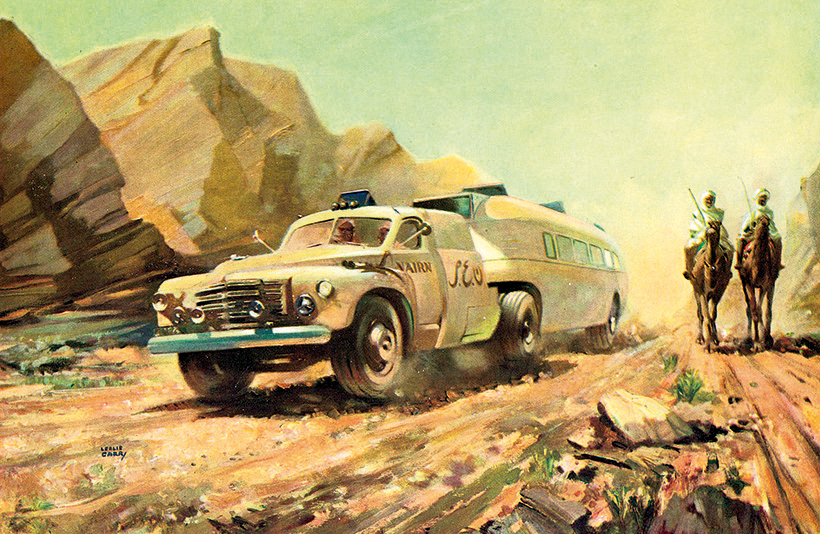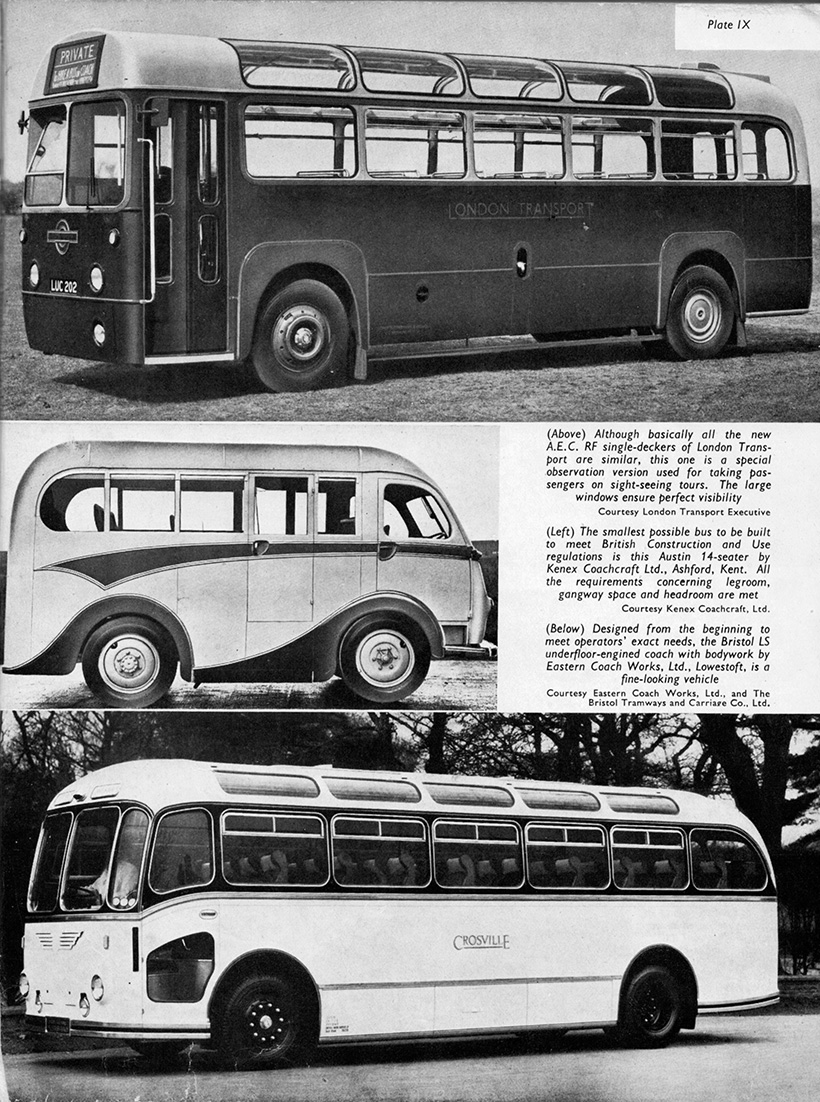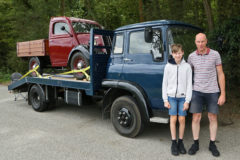Buses across the desert!
Posted by Chris Graham on 17th October 2020
Malcolm Bates reveals some fascinating details about an outlandish, high-speed desert-crossing bus service offered in the 1920s.

This wonderfully evocative painting, by famous commercial artist Leslie Carr, shows one of the post-war Studebaker artic coaches operated by Nairn Transport, speeding between Bagdad and Damascus.
While I find many articles on transport subjects ‘back in the day’ rather ‘dry’ and lacking any sense that the author was actually writing from first-hand experience (read any Commercial Motor or Modern Transport road test article for confirmation), every now and then, an article in a period magazine or contemporary book will stand out.
Books aimed at ‘young enthusiasts’ (middle-class, early teenage boys, mostly) were especially good at infusing some excitement and passion, alongside references to all the currently unfashionable stuff about ‘Great Britons’ going out and risking their lives to help build The British Empire, and establish the global trade routes on which our modern-day prosperity was based, and from which we continue (in infrastructure terms, at least) to benefit.
High-speed service
It’s in the spirit of such largely benign national expansionism, that Nairn Transport was established, to run a high-speed coach service across the Syrian Desert. Historically, the credit for this is attributed to the Nairn brothers from New Zealand, both of whom were stationed in that region as part of the Commonwealth Forces in Palestine.
But it turns out from a report, written in 1951/2, that the original idea came from a Brit; Army liaison officer, Major D McCallum, who planned to cross the desert by motor car after the end of World War I. It seems he approached the Nairn brothers, who somehow found (‘where’, we’re not told!) a Buick, an Oldsmobile and Lancia for the initial trip, which was made in 1922.
I thought I’d got a pretty good handle on the background of Nairn Transport, from the 1937 boy’s magazine Modern Wonder, but I recently discovered more information in the 1952 book Modern Buses & Coaches, written by CB Morrissey and published by Temple Press, of Bowling Green Lane, EC1. Yep, the same publisher that was responsible for The Commercial Motor.

The Best of British? Here we see (top), one of the ‘Private Hire’ RFs for London Transport, (bottom), a smart, Bristol ECW coach for Crossville and an odd Austin ‘Three-Way’ van conversion by Kenex. With hindsight, CB Morrissey didn’t make a very good case for British-built passenger vehicles, did he?
It turns out that the 534-mile trip from Damascus to Bagdad took four days by car – which was far faster than the two months it often took by camel train, we’re told. In our man Morrissey’s article, there’s a wonderful piece of understatement, of which us Brits should be proud: ‘Desert travel has its dangers and difficulties…’ he tells his readers, matter-of-factly.
Leaving aside the heat during the day, the bitterly cold nights and the possibility of mechanical breakdowns, he points-out that: ‘The Arabs have always regarded desert travellers as their rightful prey and, therefore, ‘safety money’ has to be paid to ensure safe conduct across the desert.’ Sounds dangerous and indeed, it seems, it was: ‘At night, the vehicles were halted and formed into a square, with the passengers mounting guard in turn.’ Stand firm, Carruthers, until you see the whites of their eyes…!
A safer solution
It seems a safer solution was eventually found, by awarding the local Sheikh (one Hejji el Bassam, should you be remotely interested) with a 30% share in the profits from the cross-desert mail contract, which the Nairn brothers had obtained from the governments of Palestine, Syria and Egypt; all of which became British Protectorates after 1918.
According to DC Morrissey, the first ‘commercial vehicles’ were employed in 1927. These were American-built Safeway saloon coaches, seating 15 passengers ‘in large armchair seats’. Each could carry over a ton of luggage on their roof racks, and had special, 140-gallon fuel tanks enabling them to complete the journey.
In the summer of 1934, we’re told that: ‘Two, huge, five-axle articulated, diesel-engined vehicles made the journey over the mountains of Lebanon, to Beirut.’ These were the Marmon Herrington units featured on the Modern Wonder front cover. The Damascus-to-Bagdad route now took just 24 hours at an average speed of 22mph over rocky desert terrain, which confirms that the units needed to top 60mph on the good bits.

Why didn’t British chassis manufacturers get any orders from Nairn Transport? Er, this might help explain why. Basically, this was an Albion, three-axle lorry chassis, on to which a very basic, dual-purpose body has been erected. This was one of a large number of early post-war Albions operated by Railway Road Motor Services in South Africa, as pictured in Modern Buses & Coaches.
The service included a stop at Ramadi and: ‘a company rest house at Rutba Fort, where passengers could enjoy a wash and brush-up, and a meal.’ But that aside, the service was non-stop as two drivers were employed, one driving, while the other slept.
While there’s some background on the Nairn brothers’ story on the internet, what isn’t mentioned is a) when the service ended – most likely as a result of the tangled politics of the area and, b) what the final vehicles used on the service were. Modern Buses & Coaches at least provides some detail on one of those questions as, by 1952, Nairn Transport had taken delivery of post-war, two-axle articulated Studebaker tractor units – rejoice Code 3 modellers, we’ve finally found a use for those little Dinky Toys streamlined tankers!
Other routes
In the post-war era, Nairn Transport employed 115 staff, and also ran services between Cairo and Alexandria and Cairo and Port Said. The full colour frontispiece of Modern Buses & Coaches provides us with a wonderful ‘artist’s impression’ by famous commercial artist Leslie Carr (1891-1969), showing one of the new Studebakers with an articulated passenger trailer blasting past two totally disinterested locals mounted on their camels!
Alas, having seen that image, young readers are then expected to be impressed by pictures of the best that the British commercial vehicle industry had to offer at the time, one of the new RF single-deckers or RT double-deckers for London Transport, a weird, Crellin half-deck coach body on a Foden chassis for airline KLM, a Bristol LS with admittedly rather smart coach body by ECW for Crossville (a type used much later by several overland services to India – albeit at a more leisurely pace – Ed) and, of all things, an Austin ‘Three-way’ van chassis with 14-seat passenger body by Kenex Coachcraft of Ashford!
Would you want to cross a desert in any of that lot? As CB Morrissey has it, the Nairn Brothers service from Bagdad to Damascus: ‘qualifies, without difficulty, for the title of the World’s most romantic and arduous bus route…’
You can’t really argue with that statement, can you?
For a money saving subscription to Vintage Roadscene magazine, simply click here





